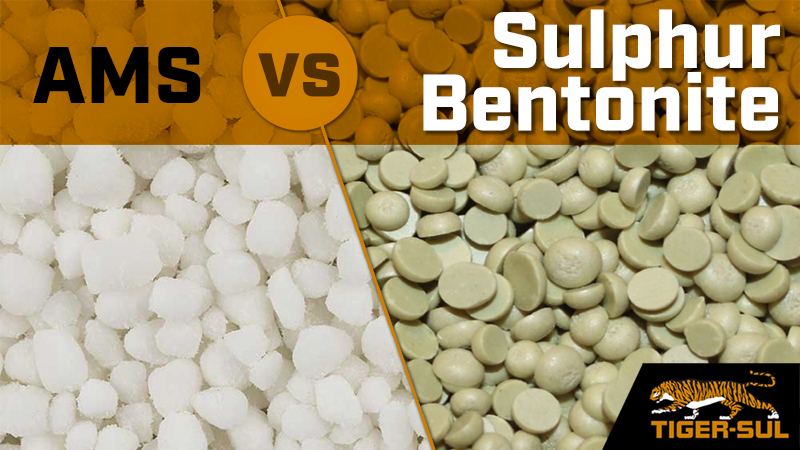Fertilizer Application Outlook: Celebrating The Good Times

The past two years have been good years for most crop producers. Net farm income is projected to show a 28% increase for 2011, which matches the increase of 2010, according to the USDA’s November 2011 forecast. In 2012, the trend is predicted to continue, though not at quite the same level.
In addition, many producers should have cash to spend with average 2012 commodity prices expected in the range of $5 to $6 per bushel for corn, $11 to $13 per bushel for soybeans, and around $7 for wheat.
Global growth, rising income levels and demand for food should help ensure continued prosperity at the farm level. While each producer’s situation varies, most are in positive cash positions and many are looking for opportunities to invest in their farming operations for both short-term and long-run benefits. Now may be an ideal time for retailers to recommend more aggressive fertilizer strategies to not only benefit customers but also improve the profit potential for your business.
There are many factors to look at when encouraging producers to invest more in their crop fertility programs. The drive for higher yields is a good place to start. Jim Stetson, precision farming coordinator and staff agronomist for Ag View FS in Princeton, IL, has seen producers in his five-county area push corn yields to the 200-bushel-per-acre level, then plateau. His customers are eager to move yields upward.
“With an increase in awareness that corn hybrids now have the genetic capability to yield at a much higher level, our producers definitely want to make sure there is enough fertility for the crop,” says Stetson. “If we’re going to reach the goal of feeding 9.2 billion people by 2030, we’ll have to use new and different fertility practices and nitrogen management techniques. Ultimately, we have to reach the 300-bushel-per-acre goal for corn and 80 bushels for soybeans.”
A Case For Fertilizer Investment
About 50% of Stetson’s customers use a variable-rate prescription approach to nutrient application, working to push soils with proven 240- to 260-bushel yield capacity even higher.
For 2012, others are enhancing their prescription applications by applying minimum rates on areas that would otherwise call for no product, to boost total available phosphorus (P) to 100 pounds per acre, based on some newer University of Illinois recommendations.
With the exception of fields with sandy soils, overall yield goals are being raised by 20%, to a 220- to 240-bushel level. In addition to investing in higher levels of P and potassium (K), many programs include supplemental sulfur (S), zinc (Zn) and other micronutrients.
“Our customers have the money to invest, they’re seeing yield responses to sulfur, zinc and micronutrients, plus they see the overall yield benefit of maintaining soil test levels,” Stetson adds. The Ag View FS program includes a strict regimen of soil testing every four years to assess the soil’s ability to provide nutrients to the crop. The soil test levels are then used in developing recommendations for supplemental nutrient applications to reach customers’ goals.
Stetson recommends broadcast application of MicroEssentials SZ to supply P, S and Zn as well as nitrogen (N). Because it provides the correct ratio of all four nutrients in the same granule, plants benefit from more even distribution and better availability of Zn and S, which are hard to disperse in a typical fertilizer blend. Spring application gives plants a jump start as planting dates move earlier and soils are cooler.
Building Nutrient Levels
There are two strategies for fertility recommendations to manage relatively soil-immobile nutrients, such as P, K, Zn and magnesium (Mg). Both have advantages and disadvantages.
Nutrient sufficiency. This applies just enough fertilizer to maximize profitability each year without considering future soil nutrient balance. The sufficiency strategy typically delivers 90% to 95% of the desired yield goal. Generally, P application rates equal to crop removal are needed to maintain soil test P levels. The sufficiency management approach means eventually fertilizer P (and K) application will be required annually to meet crop needs.
Build-maintenance strategy. Fertilizer rate recommendations are made to meet the nutrient requirement of the immediate crop and to raise soil test values to or beyond the critical level over a period of time (usually four to eight years). Once the soil test value is significantly higher than the critical level, nutrients are applied at the crop-removal rate to maintain the target range.
Sufficiency Considerations
Nutrient sufficiency is primarily an economics-based strategy, often used to manage input costs when fertilizer prices are high, such as in 2008, or in situations when cash flow is a limiting factor for the operation. Nutrient sufficiency is also a strategy used on cash-rent acres, though Larry Hill, Farmers National Co. area vice president, Eagle Grove, IA, reports that most farm operators recognize the yield benefits they receive from maintaining soil test levels at or above critical. Hill sees more and more operators working with crop consultants and following their recommendations to optimize crop productivity.
In the case in which soil tests levels are below critical, Hill recommends cash-rent tenants work with the farm owner and a crop consultant to develop a plan and written agreement so the tenant is not building soil nutrient levels at his sole expense.
“Most farm owners recognize the benefit of maintaining soil productivity and thus the value of their farm,” Hill explains. “When we take on management of a farm low in fertility, we ensure the investment is made to bring the land up to its potential.”
Build-Maintenance Opportunity
There are several strong arguments for the longer-term build-maintenance strategy. As Paul Fixen, Ph.D. and senior vice president, Americas Group coordinator, and director of research, International Plant Nutrition Institute, points out by investing available cash to build soil nutrient levels when crop returns are very positive, producers will have much greater risk-management options if commodity prices should drop or input prices escalate significantly.
“In our 2010 summary of soil test levels, we saw a pretty significant increase in the percentage of samples that were at or below the critical level for phosphorus and potassium compared to a similar survey in 2005,” Fixen relates. “This happened because crop nutrient removal rates exceeded nutrient application rates due to a combination of farmers cutting back on fertilizer to manage input costs, inability to apply because of wet field conditions, and because producers simply weren’t aware of the nutrient drawdown of higher-yielding crop genetics.
“By rebuilding soil test levels now, growers will have better flexibility to manage cash allocations from year to year, deal with unexpected spikes in input costs, and manage weather-related challenges in the future, minimizing the likelihood that a nutrient shortage will significantly cut yields,” Fixen adds.
Stewardship Considerations
As you consider making nutrient recommendations that include higher amounts of supplemental fertilizer, it’s also important to be cognizant of reducing the opportunity for them to enter surface water or groundwater. “In the case of phosphorus, it’s important to remember that a significant portion of the P that moves into streams comes off fields as particulates in surface runoff,” explains Dan Froehlich, Ph.D. and research manager at The Mosaic Co. “Controlling runoff, erosion and sediment movement off the soil surface will minimize the risk of elevated P soil test levels contributing P to surface water.” Froehlich also suggests avoiding surface application of P during the time of year when heavy rainfall events are prevalent so there is less potential for runoff.





